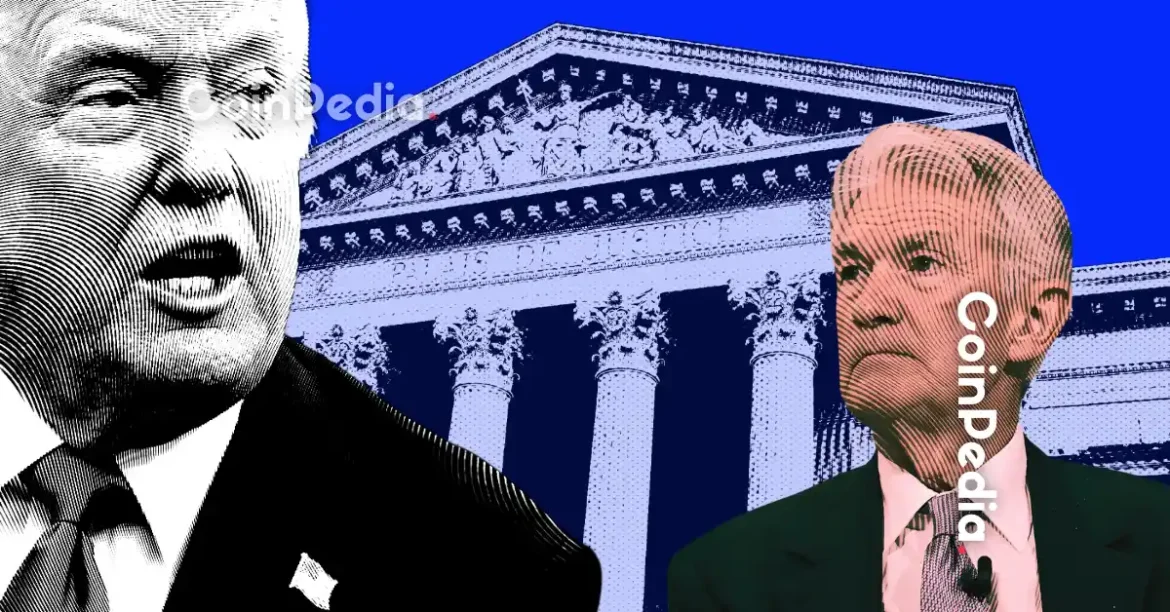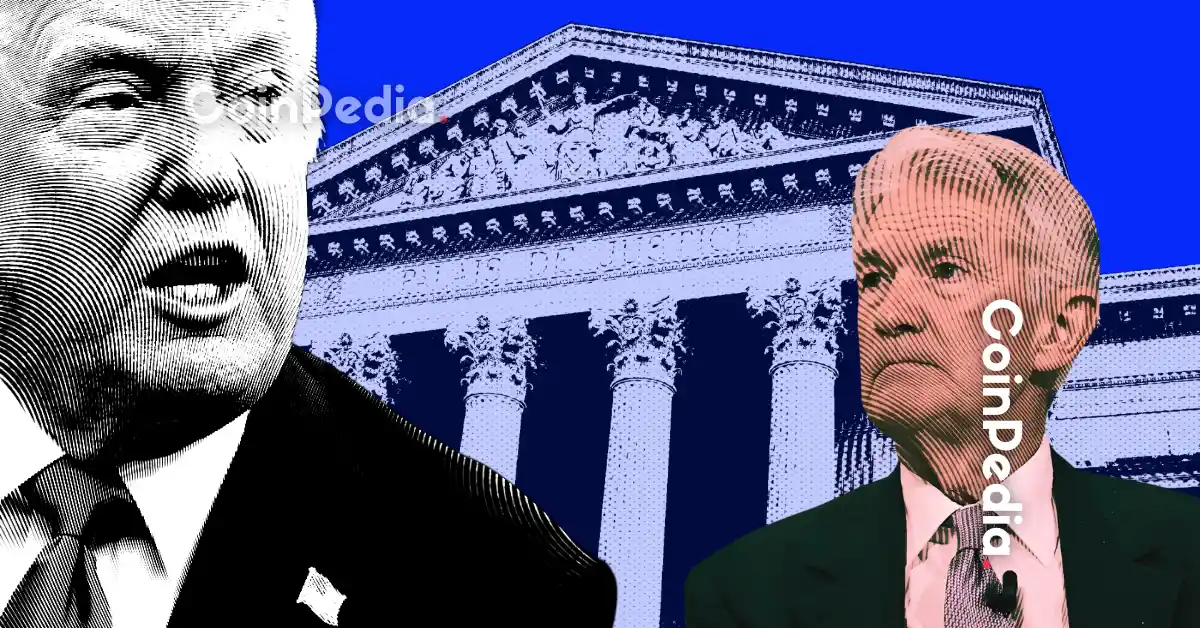The Tug-of-War: Trump, Powell, and the Fed’s Rate Dilemma
Introduction
The relationship between the U.S. presidency and the Federal Reserve has always been a delicate balance of power and independence. However, during Donald Trump’s presidency, this dynamic reached new heights of tension and public scrutiny. Trump’s persistent calls for interest rate cuts clashed with the Federal Reserve’s commitment to data-driven, independent monetary policy. This tug-of-war between the executive branch and the central bank raised critical questions about economic policy, political influence, and the future of monetary governance.
The President’s Perspective: Growth and Political Leverage
Donald Trump’s insistence on lower interest rates was rooted in both economic and political motivations. From an economic standpoint, Trump believed that lower rates would stimulate business investment, job creation, and overall economic growth. He frequently described the potential benefits of lower rates as “rocket fuel” for the economy, suggesting that aggressive rate cuts could propel the U.S. into a new era of prosperity.
Politically, Trump saw economic performance as a key metric of his presidency’s success. A strong economy during his term would bolster his re-election prospects and solidify his legacy. Lower interest rates, even if they carried long-term risks, could provide a short-term economic boost that would be politically advantageous. Trump’s rhetoric often framed the Fed’s decisions as either helping or hindering his economic agenda, creating a narrative that positioned the central bank as either a partner or an obstacle.
Additionally, Trump highlighted the burden of national debt servicing, arguing that lower interest rates would reduce the government’s interest expenses. This argument resonated with segments of the population concerned about fiscal responsibility, as it suggested that lower rates could free up funds for other priorities, such as infrastructure or social programs.
The Fed’s Stance: Independence and Data-Driven Decisions
Jerome Powell, the Federal Reserve Chair, and his colleagues maintained a steadfast commitment to the central bank’s independence and a data-driven approach to monetary policy. The Fed’s primary mandate is to maintain price stability and achieve full employment, and its decisions are based on economic indicators such as inflation, employment rates, and GDP growth.
Powell consistently emphasized that rate decisions should be based on economic data rather than political pressure. This cautious approach was often at odds with Trump’s calls for immediate and substantial rate cuts. The Fed’s reluctance to cut rates aggressively was driven by concerns about potential inflation and asset bubbles, which could undermine long-term economic stability.
The Fed’s stance highlighted the importance of central bank independence. By resisting political pressure, the Fed demonstrated its commitment to its mandate and its role as a guardian of economic stability. This independence is crucial for maintaining public trust in the institution and ensuring that monetary policy is not influenced by short-term political considerations.
The Clash of Ideologies: A Historical Departure
Trump’s public criticism of the Fed and its chair was a significant departure from historical norms. Traditionally, presidents have avoided directly commenting on monetary policy to preserve the perceived independence of the central bank. Trump, however, openly voiced his opinions, often using strong language and even personal attacks against Powell.
This approach sparked concerns about the potential undermining of the Fed’s credibility and its ability to effectively manage monetary policy. Many economists and financial experts argued that Trump’s interference could damage the Fed’s reputation and erode public trust in the institution. The Fed’s independence is a cornerstone of its effectiveness, and any perceived political influence could compromise its ability to make objective decisions.
The clash of ideologies between Trump and Powell also highlighted the broader tension between short-term political goals and long-term economic stability. While Trump sought immediate economic benefits, the Fed focused on sustainable growth and stability. This divergence underscored the importance of maintaining a clear separation between political and economic decision-making.
Economic Context: Growth, Inflation, and Global Pressures
The debate over interest rates occurred against a backdrop of moderate economic growth, relatively low inflation, and increasing global economic uncertainty. While the U.S. economy was performing reasonably well, there were concerns about the potential impact of trade disputes, global slowdowns, and other external factors.
Trump’s tariffs, aimed at reducing trade deficits and protecting domestic industries, created additional uncertainty for the Fed. Powell and other policymakers were hesitant to cut rates too aggressively, given the potential inflationary effects of these tariffs. The Fed had to balance the need for economic stimulus with the risks posed by trade policies and global economic trends.
Furthermore, the global trend of lower interest rates put pressure on the Fed to consider easing monetary policy. Many other central banks around the world were already cutting rates to stimulate their economies, and some argued that the Fed should follow suit to maintain the competitiveness of the U.S. economy. However, the Fed remained cautious, emphasizing the need for a measured approach that prioritized long-term stability over short-term gains.
The Crypto Market’s Perspective
The cryptocurrency market often reacted to the discourse surrounding interest rates. Lower interest rates typically coincide with a weakening dollar, which historically has driven investors to alternative investments like Bitcoin. Crypto enthusiasts were keen on potential rate cuts as it could signal a more risk-on environment, beneficial for the market’s overall sentiment.
The Fed’s decisions on interest rates have a significant impact on the crypto market, as lower rates can make traditional investments less attractive, driving capital towards higher-risk assets like cryptocurrencies. This dynamic highlights the interconnectedness of monetary policy and global financial markets, as well as the growing influence of digital assets in the broader economic landscape.
Diverging Paths: The Inevitable Stand-Off
Despite Trump’s relentless pressure, the Fed largely resisted his calls for deep rate cuts. While the Fed did make some adjustments to interest rates during Trump’s presidency, these decisions were primarily based on economic data and the Fed’s assessment of the overall economic outlook.
This divergence between the president’s wishes and the Fed’s actions highlighted the importance of central bank independence. Despite facing intense political pressure, the Fed remained committed to its mandate of maintaining price stability and full employment, even when it meant disagreeing with the president.
The stand-off between Trump and Powell demonstrated the resilience of the Fed’s independence and its ability to withstand political pressure. This is crucial for maintaining economic stability and public trust in the long run. The Fed’s commitment to data-driven decision-making ensures that monetary policy is not influenced by short-term political considerations, but rather by a long-term vision of economic stability.
Lasting Implications: A Precedent Set?
The Trump-Powell saga raised important questions about the relationship between the executive branch and the Federal Reserve. While the Fed ultimately maintained its independence, the episode demonstrated the potential for political interference in monetary policy.
It remains to be seen whether future presidents will follow Trump’s example of publicly pressuring the Fed. However, the events of his presidency have undoubtedly changed the landscape of monetary policy and raised awareness of the importance of central bank independence.
The precedent set by Trump’s actions could influence future interactions between the White House and the Fed. While the Fed’s independence is a cornerstone of its effectiveness, the potential for political pressure remains a challenge. The Fed must continue to uphold its commitment to data-driven decision-making and resist political interference to maintain its credibility and effectiveness.
The Unfolding Legacy
The battle between Trump and Powell over interest rates was more than just a policy disagreement; it was a clash of ideologies, a test of institutional independence, and a reflection of the complex interplay between politics and economics. While the immediate impact of this saga may be debated, its lasting legacy will undoubtedly shape the future of monetary policy and the relationship between the White House and the Federal Reserve.
The saga showcased that despite immense pressure, institutions built on the principles of data-driven decision-making and independence can withstand political storms. This is crucial for maintaining economic stability and public trust in the long run. The Fed’s ability to resist political pressure and uphold its mandate is a testament to the strength of its institutional framework and its commitment to economic stability.
As the U.S. continues to navigate the complexities of monetary policy, the lessons learned from the Trump-Powell tug-of-war will serve as a guiding light for future policymakers. The importance of central bank independence, data-driven decision-making, and the separation of political and economic considerations will remain at the forefront of discussions about monetary policy and economic governance.





